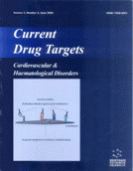Abstract
The Na+/H+ exchanger (NHE) is a ubiquitous protein present in mammalian cells. In higher eukaryotes this integral membrane protein removes one intracellular H+ for one extracellular Na+ protecting cells from intracellular acidification. NHE is of essential importance in the myocardium. It prevents intracellular acidosis that inhibits contractility. NHE also plays a key role in damage to the mammalian myocardium that occurs during ischemia and reperfusion and is involved in hypertrophy of the myocardium. NHE is composed of a membrane bound domain of approximately 500 amino acids plus a hydrophilic regulatory cytoplasmic domain of approximately 315 amino acids. The NHE1 isoform is the only significant plasma membrane isoform present in the myocardium. The activity of NHE1 is elevated in animal models of myocardial infarcts and in left ventricular hypertrophy. During ischemia and reperfusion of the myocardium, NHE activity catalyzes increased uptake of intracellular sodium. This in turn is exchanged for extracellular calcium by the Na+/Ca2+ exchanger resulting in calcium overload and damage to the myocardium. Numerous inhibitors of NHE have been developed to attempt to break this cycle of calcium overload. In animal models excellent success has been obtained in this regard. However in humans, clinical trials have resulted in only modest success and recently, significant detrimental side effects were note of one NHE inhibitor. The mechanisms by which these inhibitors affect NHE activity are presently being investigated and regions of the protein important in NHE activity and inhibitor efficacy are related but not identical. Future studies may develop superior inhibitors that may circumvent recently reported side effects. Recently, NHE inhibition has been shown to be remarkably effective in preventing hypertrophy in some animal models. Whether this proves to be a practical treatment for hypertrophy in humans has yet to be determined.
Keywords: plasma membrane, myocardium, apoptotic pathway, protein kinase c, reperfusion injury, ischemia, nhe inhibitors
 5
5













